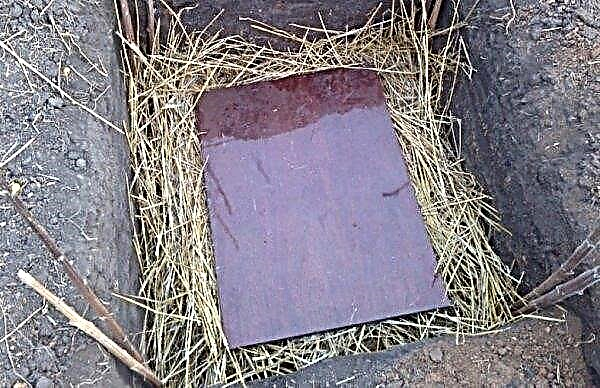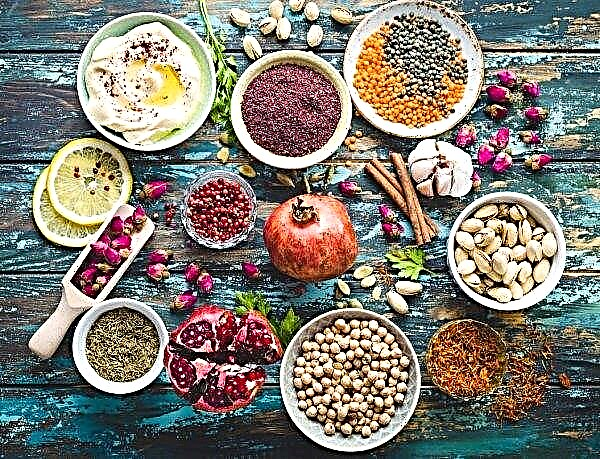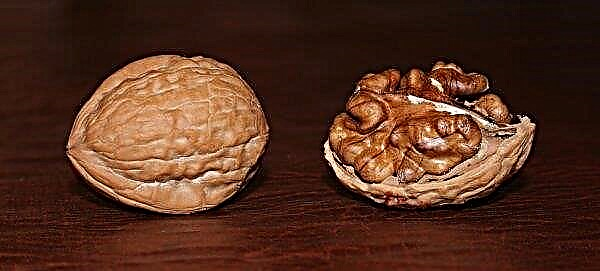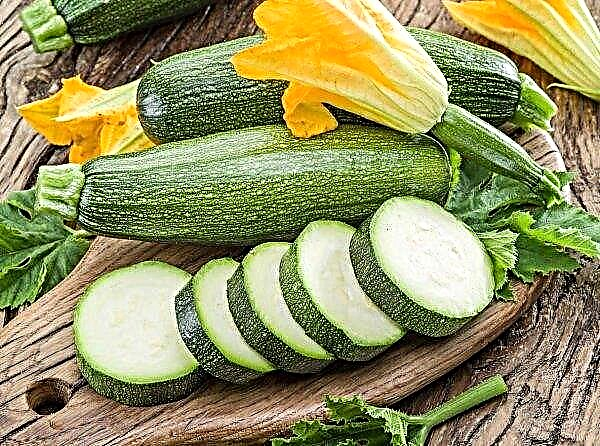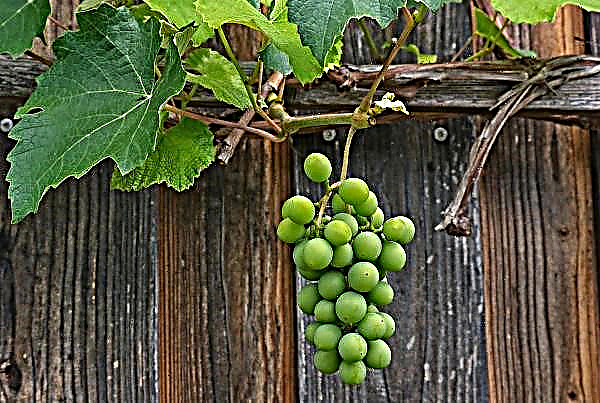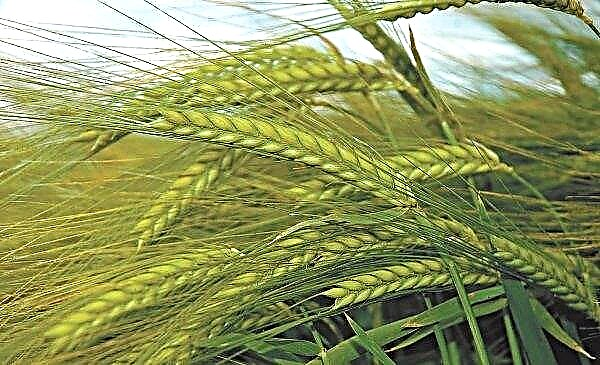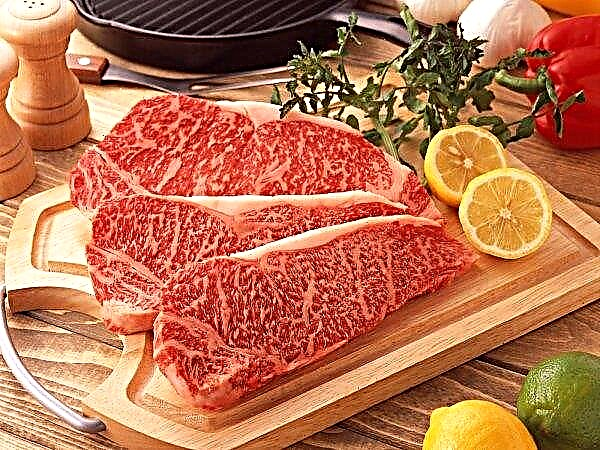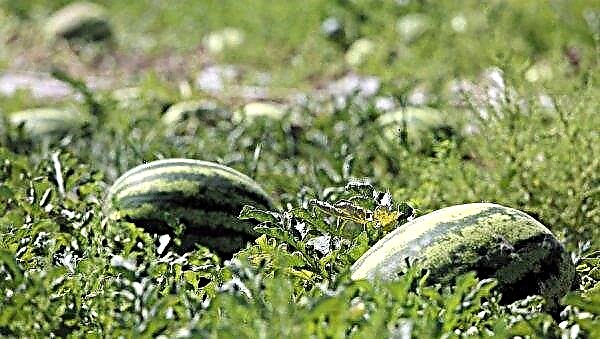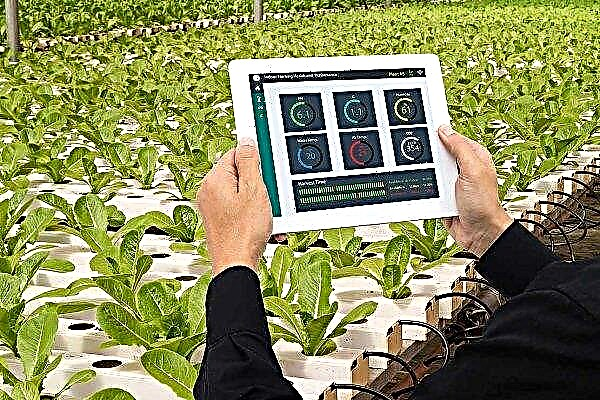One of the first places in the list of the best conifers for planting in the garden is Serbian spruce, which is distinguished by excellent external data and unpretentiousness in care. What types of evergreen perennial exist, what are the features of caring for the species and its cultivation - find out further from the article.
View description
Serbian spruce (Picea Omorika) - an evergreen perennial, a representative of the Sosnovy family, which was discovered by biologist Joseph Pancic from Serbia in 1875. In nature, the culture is most common in eastern Bosnia and Herzegovina, grows in the Drina River Valley in western Serbia.
Spruce is a powerful strong tree 30–40 m high and 3-4 m wide, with an intense growth rate. Among all representatives of conifers, the Serbian specimen is one of the fastest growing. In one year, the growth of culture can be 35–50 cm in height and 15–25 cm in width. The height of a 30-year-old tree is 10–15 m.

The culture is characterized by a narrow, conical or pyramidal pointed crown, which consists of dense, short, abundantly pubescent shoots of yellowish-brown color. Lateral branches are short, have a direct or arched shape, small shoots - hanging down. Mostly the entire lower tier of shoots in old spruces, with a good amount of light, is preserved. The bark is a reddish-gray, rough structure. Spruce has wide, egg-shaped, slightly pointed buds, up to 8 mm long and 3-4.5 mm wide, red-brown in color, with numerous non-resinous awl-like scales.
It is easy to recognize the Serbian spruce by the original color of the needles, which is characterized by two-color - on the upper side it has a dark green color, on the lower side it is blue-white. The needles are flattened, needle-shaped, grows up to 18 mm, in width - 2 mm. The coniferous cover renewal interval is approximately 8–11 years.
Important! The needles of spruce are covered with a thick layer of wax, which is much thicker than that of other representatives of conifers. This coating protects the tree from the negative effects of the external environment.
During the flowering period, which falls in May, red-yellow flowers of the male type and beautiful vertical purple-red women are formed on the plant. The fruits of the culture are presented in the form of spindle-shaped cones, 4–8 cm long, which at the initial stage of ripening have a dark purple, almost black color, later become dark brown. The surface of the cones is covered with small, rounded scales with weak teeth, with brown or red-brown seeds with wings 3 mm long.
The seed ripening period is August. Fruit bearing conifers starts from the 12th year of growth. Serbian spruce belongs to long-lived cultures - its average life in the wild is 300 years.

Landscape design application
The culture of the described species gained wide distribution in the field of landscape design. Due to its simplicity in cultivation, ease of care and high aesthetic properties, it has been successfully used to create live fences, solitary plantings, and form compositions in symbiosis with other conifers.
Did you know? In the event of the death of spruce, its root system can form a clone tree. A similar culture grows in Sweden, and eё age is about 9500 years. The plant is considered the oldest plant organism in the world.
The tree is suitable for single and group plantings, as the main element in creating green spaces in city parks, squares, and forest plantations. The plant perfectly tolerates urban air that is resistant to the harmful effects of exhaust gases and industrial emissions, therefore it is an excellent tool for forming alleys on the central streets of cities and megacities.
Popular varieties of Serbian fir
Today, there are a large number of varieties of Serbian spruce. However, the greatest demand, popularity in the field of landscape design and garden cultivation became: dwarf, alpine spear-shaped and wide-pinnacle varieties. A description of some of them is presented below.
Aurea
Picea Omorika Aurea is a coniferous perennial with a narrow-conical crown, with a diameter of up to 90 cm, yellow-green needles, the color of which becomes blue-green by autumn. The tree is small, by the age of 10 it grows up to 2.5 m. The maximum possible height of an adult specimen is 9 m. Aurea is able to boast of high frost resistance, up to –29 ° C, lack of moodiness and undemanding to soils.
 It prefers to grow in well-lit places, but can tolerate light partial shade.
It prefers to grow in well-lit places, but can tolerate light partial shade.
Pendula
Spruce Pendula (Omorika Pendula) is distinguished by elegantly hanging elastic, flexible branches and a thick, very pubescent, shiny needles of dark green color. The tree belongs to the medium-sized category, has compact dimensions and an unusual “narrow-weeping” crown shape, with a diameter of up to 1.5 m. An adult plant grows up to 10 m.
Pendula is characterized by high resistance to frost, shade tolerance, resistance to many ailments and pests. Thanks to the hanging crown, culture is often used to create original and creative compositions and mixborders near ponds, stones.
 Effectively looks in solitary and group plantings.
Effectively looks in solitary and group plantings.
Karelian
Serbian spruce Karel (Picea Omorika Karel) is considered one of the most popular and valuable varieties. Dwarf forms of the described spruce reach a height of not more than 60 cm, which allows the plant to be used in landscape design. The crown, with a diameter of just over 1 m, consists of highly branching shoots that are placed at different angles from the central conductor. The upper branches are usually located up, the lower - either down or in the horizontal direction.
Karel does not grow very quickly, adding 7-10 cm in growth annually. Spruce is characterized by excellent frost resistance, strong immunity, but needs nutritious, breathable soils for full growth and maintenance of decorativeness.
 It does not tolerate compacted soil and moisture stagnation, which have a detrimental effect on the state of the root system.
It does not tolerate compacted soil and moisture stagnation, which have a detrimental effect on the state of the root system.
Nana
The spectacular dwarf spruce Nana (Omorika Nana) has a slow growth rate and grows to 120 cm by 10 years. An adult plant can reach 4–5 m. Every year, the growth of the culture increases by 7–10 cm. Nana has a wide conical very dense crown, which is formed by short, stiff shoots. The needles of the tree are not dense, on the upper side it is yellow-green, on the lower side it is bluish-gray with two stripes of white color.
 Due to its compact size, Nana looks great on personal plots or in private gardens, it is used to create compositions paired with heather.
Due to its compact size, Nana looks great on personal plots or in private gardens, it is used to create compositions paired with heather.
Vodan
The dwarf hybrid Wodan is characterized by slow growth rates and reaches a height of 60 cm at the age of 30. A feature of the variety is the original asymmetric, pyramidal crown shape. The needles of the culture are collected in small bundles, slightly curved, has a bluish-green color, and silver on the underside. Vodan is one of the most decorative varieties. It is frost-resistant, gas- and smoke-resistant, shade-tolerant, incapable of soil composition and climatic conditions.
 Looks great in solitary form or in a group with other conifers in parks or gardens.
Looks great in solitary form or in a group with other conifers in parks or gardens.
Landing
Serbian spruce does not have special landing requirements. Most of its varieties are unpretentious to soil compositions, adapt well to climate conditions, and shade tolerant. However, to cultivate a healthy, strong and highly decorative plant, experts advise to follow some simple recommendations when planting.
Seedling Selection
The further growth and development of spruce will largely depend on the choice of a quality seedling. The highest survival rate is characterized by seedlings grown in containers. For planting, it is not recommended to use plants with an open root system.
Planting material must be purchased in specialized markets or nurseries that are engaged in growing plants professionally. When choosing a seedling, you need to pay attention to the condition of its shoots and needles: they must be fresh, elastic, bright saturated color. Yellowing and partial shedding of needles indicates the unsuitability and old age of the material. For cultivation, experts advise the use of young plants, aged 2-3 years.

Site preparation
As noted above, Serbian spruce is undemanding to soil and can grow on almost any soil. The exception is too salty, marshy land with a close proximity to the surface of the groundwater. Trees develop well and grow quickly on light, air- and moisture-permeable, fertile loams.
Important! When planting spruce on any type of soil, it is necessary to organize a drainage layer in the planting pit, which will prevent stagnation of moisture near the roots of the culture.
As for the plot, the plant of the described species prefers lighted, sunny places, protected from cold winds and drafts. It can easily tolerate small partial shade. Immediately before planting a seedling, which is advisable to carry out, starting from the end of April, you need to carefully dig and moisten the site.
Step-by-step instruction
Planting Serbian spruce does not cause much difficulty for gardeners and is carried out according to this algorithm:
- Dig a hole 50–70 cm deep, depending on the size of the root processes.
- At the bottom of the recess, line the drainage layer using broken bricks, pebbles or expanded clay.
- Mix part of the soil removed from the pit with turfy soil, leafy soil, peat and river sand, in a ratio of 2: 2: 1: 1.
- Cover the drainage layer with fertile soil.
- Gently lay the seedling on the ground, sprinkle in such a way that the neck of the root is at a level with the ground.
- Lightly tamp the soil around the seedling with your hands, pour plenty of water, using 40-50 l of settled water on one tree.

Immediately after planting a seedling, experts advise feeding it with minerals, for example, a solution prepared from 10 l of water, 150 g of nitroammophoska and 10 g of Kornevin. Such a recharge will contribute to the rapid rooting of spruce and the intensive development of the root system.
Care
Caring for a Serbian spruce is easy. It is enough to carry out traditional agricultural activities, the main of which are: regular watering, systematic top dressing, pruning and shaping, professional treatment from pests and ailments.
Did you know? Spruce wood is an excellent raw material for making musical instruments. Its fibers are arranged very evenly, which allows the instrument to achieve extremely clear sound.
Watering and feeding
Spruce of the described variety is a moisture-loving plant that needs good quality watering, which is carried out in a hot period of time once a week. After moisturizing, experts advise loosening the soil, deepening by 4-6 cm, which will saturate the soil with oxygen and nutrients, thereby activating root growth.

About twice a season, the plant should be fed using mineral complexes designed for conifers. In early spring, it is advisable to nourish the tree with nitrogen-containing preparations that stimulate the growth of green mass. In the middle of summer, potassium-phosphorus preparations are used to fertilize the culture, which strengthen the immune system, increase the protective functions of the conifer and make it possible to prepare it for the upcoming wintering.
Pruning
As a rule, the Serbian spruce cannot be pruned, however, if it is used as a living fence or as an element of landscape design composition, then the tree branches are slightly shortened and trimmed. In late May - early June, when the period of intensive movement of juice ends, prophylactic circumcision is carried out, during which too weak, dry, damaged, diseased shoots are removed.
Disease and Pest Prevention
The plant of the described species is rarely exposed to pest attacks or ailments. But with poor care and adverse climate conditions can be a "victim":
To protect the decorative forms of the Serbian spruce from pests and fungal diseases, a number of preventive measures are carried out:
- regularly loosen the soil;
- destroy weeds on the site;
- maintain a normal soil moisture level for the plant;
- systematically sprayed the tree with fungicidal and insecticidal drugs.

Serbian spruce is a highly decorative, perennial coniferous culture with a wide range of positive qualities, among which gardeners note: unpretentiousness in leaving, excellent adaptation to climatic conditions, frost resistance and excellent aesthetic qualities. The tree looks harmoniously paired with other conifers or in a single tapeworm planting.


